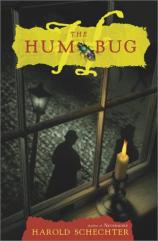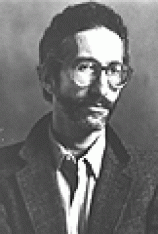The Hum Bug
Review
The Hum Bug
Harold Schechter teams up another unlikely pair of historical
figures when Edgar Allan Poe meets P. T. Barnum in THE HUM BUG. The
partners are an odd couple as paradoxical as Felix Unger and Oscar
Madison, proving once again how opposites attract. The result is an
absorbing 19th Century mystery, the second fictional piece to come
from the pen of this true-crime master following his debut Poe
novel NEVERMORE.
Writing characteristically in Poe's style, Schechter authentically
mimics the gothic writer, right down to his overuse of dashes and
customary wordiness ("...my finely attuned auditory faculties
detected the muffled but unmistakable noise of human vocalization
emanating from a source only a short distance away.") Far from
making Poe too sober a chronicler, however, Schechter gives the
narrator's voice a wry humor. He seems to enjoy composing absurdly
loquacious sentences, parodying the legendary writer with an almost
satirical glee.
Opening in 1844, THE HUM BUG is an entertaining glimpse into the
past, replete with characters whose actions and thoughts are
befitting of the era. As we join Edgar A. Poe, he has once again
found himself unable to sustain his family with a decent
livelihood. Packing up his dearest wife Sissy and aunt Muddy, he
relocates to New York City to seek work. At the sight of a handbill
for P. T. Barnum's American Museum, which contains countless facts
of questionable veracity and at least one description of frivolous
fabrication, the critic in Poe bristles, sending him flying
indignantly to confront the great showman. Instead of being
chagrined when caught in a shameful bit of spurious invention,
Phineas Taylor Barnum is impressed with the writer's audacity and
with his deductive reasoning. Thusly pleased, he ultimately offers
him a job.
A gruesome murder carried out in a fashion that replicates one of
the American Museum's displays brings the press to haranguing
Barnum. He turns to Poe for his proven sleuthing powers. Too soon,
solving the case becomes urgently crucial, as another corpse shows
up --- another beautiful young woman missing her hands, a rose
clenched between her teeth, throat savaged.
That Poe spends an inordinate amount of time in Barnum's
establishment gives Schechter an opportunity to exhibit a whole
host of colorful characters, parading them along the pages in a
morbid pageant. The Bearded Lady, the Alligator Boy, the Half-Man,
the Armless Wonder, Slim Jim McCormack, to name but a few. The
artful Phineas T. employs these "human curiosities" in and out of
his business, keeping them in sight throughout the story and
keeping the reader watching the show through the clever
descriptions concocted by the author. And while the circus master
shamelessly exploits the crippled and misshapen beings to build his
fortune, there is a sense that he treats them with great gentleness
and respect, finding them a place in society to earn a living.
Called freaks at the time, they were at least paid by Barnum to be
gawked at, a fairly generous undertaking. And at the end of the day
he housed many and befriended a few, following his convictions
despite his reputation as a charlatan.
The glib businessman is a wonderful foil for the macabre poet. The
flamboyance of Barnum's speech spices up Poe's dry verbosity,
creating amusing and lively dialogue. As detectives, they each
exhibit their special skills: Poe, his extraordinary powers of
observation reminiscent of Sherlock Holmes; Barnum, his sheer
pluck. Together, they snoop out the evil and right the wrongs while
the reader is swept along in this singularly astounding, amazing,
remarkable production.
After NEVERMORE, where E. A. Poe joins forces with Davy Crockett in
crime solving, and THE HUM BUG, featuring P. T. Barnum as Poe's
detecting assistant, who can we expect to show up in Schechter's
next great adventure back in time?
Reviewed by Kate Ayers on January 22, 2011




